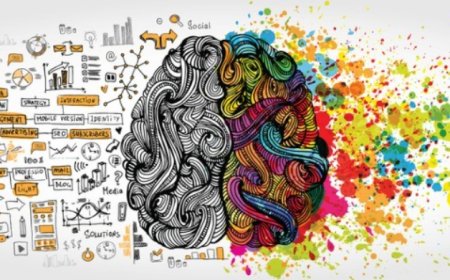The Art of Data: The Core Principles of Data Science
The foundational principles of data science, exploring data collection, analysis, and interpretation. Learn the art of using data for strategic decision-making

As a student struggling to understand the principles of data science, it can be incredibly frustrating and discouraging to feel like you're not making progress. You may have read countless articles and watched numerous videos, but nothing seems to stick. It's important to remember that data science is a complex subject that requires time and effort to fully grasp. Don't give up just yet! Consider seeking out additional resources, such as online courses or tutoring, to help you better understand the concepts. It may also be helpful to practice applying the principles of data science to practical situations, as this can help transform your understanding. Remember, learning is a process, and it's okay to struggle along the way.
As a business owner, understanding data science is crucial for making informed decisions and staying ahead of the competition. Still, with so much information out there, it can be overwhelming to know where to start. It's important to first identify your specific business needs and goals, and then seek out resources that align with those objectives. Consider attending industry conferences or workshops, or hiring a data science consultant to help guide you through the process. It's also important to remember that data science is not a one-size-fits-all solution, and what works for one business may not work for another. Take the time to experiment and find what works best for your unique situation. With persistence and dedication, you can successfully integrate data science into your business strategy.
Data science is a multidisciplinary field that combines statistics, mathematics, computer science, and domain knowledge to extract meaningful insights and knowledge from data. To understand the art of data science, one must grasp its fundamental principles. These principles serve as the foundation for data science methodologies and techniques.
Here are some of the key principles of data science:
1. Data Collection:
Data collection is the bedrock of any data-driven process. It involves a strategic approach to identifying relevant data sources and gathering information in structured formats. This process requires an understanding of data needs, selecting appropriate methods (surveys, sensors, APIs), and ensuring the data's accuracy and relevance to the problem at hand. Additionally, considerations for data ethics, compliance, and privacy play a crucial role in this phase.
2. Data Cleaning and Preprocessing:
Raw data seldom comes in a pristine state; it often contains errors, inconsistencies, or missing values. Data cleaning and preprocessing techniques are essential to address these issues. Imputation methods fill missing values, outlier detection identifies anomalies, and normalization ensures data consistency for effective analysis. This step significantly impacts the quality and reliability of subsequent analyses.
3. Exploratory Data Analysis (EDA):
EDA involves scrutinizing data to identify patterns, relationships, and anomalies. Techniques like summary statistics, data visualization (histograms, scatter plots), and hypothesis testing uncover insights that guide further analysis. It helps in understanding the distribution of data, correlations between variables, and initial trends, aiding in the formulation of hypotheses for modeling.
4. Statistical Modeling:
Statistical modeling employs mathematical models to represent relationships between variables. Techniques such as regression analysis, time series analysis, and classification algorithms quantify the connections within the data. These models describe and predict behaviors, enabling informed decision-making based on data-driven insights.
5. Machine Learning:
Machine learning algorithms enable systems to learn patterns and make predictions without explicit programming. Supervised learning predicts outcomes from labeled data, unsupervised learning identifies hidden patterns, and reinforcement learning uses feedback mechanisms to improve decision-making.
6. Data Visualization:
Data visualization transforms complex data into accessible visual formats, enhancing comprehension and communication. Tools like charts, graphs, and interactive dashboards aid in revealing trends, outliers, and relationships within the data. Effective visualizations play a pivotal role in conveying insights to stakeholders.
7. Communication and Storytelling:
Data scientists must translate complex analyses into actionable insights for diverse audiences, including non-technical stakeholders. Storytelling techniques combined with clear visualizations facilitate the communication of findings, ensuring understanding and driving informed decision-making.
8. Ethical Considerations:
Ethical considerations are integral in Data Science. Respecting privacy, ensuring fairness in algorithms, and maintaining transparency in data usage are critical. Ethical frameworks guide responsible data collection, handling, and interpretation, ensuring data practices align with societal norms and legal regulations.
The Core Pillars of Data Science
-
Data Collection:
Gathering Relevant and Reliable Data: The process of data collection involves sourcing information from various channels, ensuring that it's pertinent to the objectives at hand. Validating the reliability of data sources ensures accuracy and credibility.
Ensuring Accuracy and Completeness: Validating data accuracy involves verifying its integrity and ensuring it's free from errors or inconsistencies. Additionally, completeness ensures that all necessary data points are included for comprehensive analysis.
-
Data Analysis:
Statistical Techniques and Algorithms: Data analysis employs a range of statistical methods, algorithms, and computational tools to scrutinize raw data. These techniques uncover patterns, correlations, and anomalies, allowing for a deeper understanding of the underlying information.
Uncovering Patterns and Trends: Through analysis, data scientists identify patterns and trends within datasets. This phase involves exploratory analysis, hypothesis testing, and modeling to extract valuable insights from the information available.
-
Data Interpretation:
Making Sense of Findings: Data interpretation involves translating analytical results into actionable insights. It requires understanding the context, implications, and relevance of the discovered patterns or trends within the given domain or problem space.
Drawing Meaningful Conclusions: A crucial aspect of data interpretation is deriving meaningful conclusions that contribute to decision-making. This step involves contextualizing the insights within the broader organizational or problem-specific context.
-
Application and Iteration:
Applying Insights to Practical Scenarios: The ultimate goal of data interpretation is to apply insights gleaned from analysis in practical situations. This step involves using data-derived knowledge to inform strategies, optimize processes, or drive decision-making.
Iterative Process for Continuous Improvement: The process of data collection, analysis, and interpretation is iterative. Feedback loops and continuous analysis contribute to refining models, strategies, and data practices, ensuring ongoing improvement and adaptation to changing circumstances.
Transparency, and Organisational Transformation
Informed Decision-Making:
-
Understanding data collection, analysis, and interpretation allows individuals to gather insights critical for decision-making. By examining trends, patterns, and correlations within data sets, informed decisions can be made, leading to improved strategies and outcomes.
-
Data-backed decision-making provides a comprehensive view, aiding in risk assessment, resource allocation, and strategy formulation across various domains, from finance and marketing to operations and beyond.
Objective Decision-Making:
-
The objectivity inherent in data-driven approaches mitigates subjective biases. Statistical analysis and factual evidence allow for more reliable conclusions, reducing the influence of personal opinions or assumptions.
-
Objective decision-making based on data fosters transparency and accountability within organizations, as decisions can be traced back to empirical evidence and analysis.
Effective Data Communication:
-
Mastering the Art of Data involves not only analyzing data but also effectively communicating findings. Visualizations such as graphs, charts, and infographics simplify complex data, making it accessible and compelling for diverse audiences.
-
Using storytelling techniques to convey data insights humanizes the information, making it relatable and memorable. Effective data communication ensures that stakeholders grasp the significance of the insights, encouraging action and informed decisions.
Influencing Decision-Makers:
-
The ability to communicate data effectively empowers individuals to influence decision-makers. By presenting compelling narratives backed by data, individuals can sway opinions, drive discussions, and guide strategic directions within organizations.
-
Data-driven influence extends beyond immediate decision-makers, permeating across hierarchies and departments, fostering a culture of data-informed decision-making at all levels.
Developing Potential:
-
Mastery of the Art of Data expands beyond technical skills; it empowers individuals to harness the full potential of data science. Through predictive modeling, machine learning, and advanced analytics, opportunities for innovation and growth emerge.
-
It enables individuals to spot market trends, optimize operational efficiency, personalize customer experiences, and adapt strategies in response to evolving market demands.
Tool for Transformation:
-
The Art of Data transforms data science from a mere analytical tool to a catalyst for transformation within organizations. It facilitates not just incremental improvements but also radical changes by using data insights to challenge existing paradigms and drive organizational evolution.
The Art of Data: The Core Principles of Data Science" looks into the fundamental principles of data science, providing valuable insights into this rapidly evolving field. By exploring the intricacies of data analysis, interpretation, and application, this book equips readers with the necessary knowledge and skills to access the world of data science with confidence. Whether you are a beginner or an experienced professional, this book serves as a comprehensive guide to revealing the power of data and harnessing its potential for informed decision-making. With its clear explanations and practical examples, "The Art of Data" is a must-read for anyone interested in mastering the art of data science.







